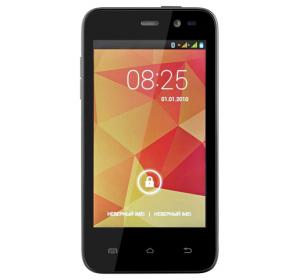Flash firmware on ZTE Leo Q1
Mobiles >> ZTE >> ZTE Leo Q1| Specifications | Reviews | Secret codes |
| Unlock phone | Root phone |
| Backup | Flash Firmware | Screenshot |
| Hard Reset |
How to flash ZTE Leo Q1?
Why reinstall the firmware?
Errors in the operation of the Android OS begin to appear.
Some applications will not open.
Many programs from the Play Market do not work.
The phone restarts by itself for no reason.
The phone slows down a lot during operation.
You want to update your firmware.
Where can I find the firmware?
On the official website of the manufacturer.
On sites where third-party developers post custom operating systems.
What should be done before installing the firmware?
Create a backup copy of user data and transfer it to your computer.
Insert your SD card into your phone. It must have enough memory to fit the firmware.
Remember your smartphone model.
Charge your phone fully. If the battery runs out during boot, the device will no longer turn on. It will be difficult to restore it.
Download archive with Firmware. Place it on the SD card.
Installing TWRP Recovery
Install the Official TWRP App via the Play Market. And run this application.
At the first start, you need to give consent to future manipulations, as well as consent to granting the Superuser rights to the application. Check the checkboxes and press the 'OK' button.
In the next screen, select the item 'TWRP FLASH' and provide the application with root-rights.

On the main screen of the application, select 'Select Device', and find your phone model.
After selecting the phone, the program will redirect the user to a web page to download the corresponding image file of the modified recovery environment. Download the proposed *.img file.
When the download is finished, you need to return to the main screen of the Official TWRP App and click on the 'Select a file to flash' button. Select the file downloaded in the previous step.
Press the 'FLASH TO RECOVERY' button and confirm your choice.
The recording process is very fast, and upon completion, the message 'Flash Completed Succsessfuly!' appears. Click 'OK'. The TWRP installation procedure can be considered complete.
Transfer the necessary files to the SD memory card. Using a PC or laptop card reader, it will be much faster.
Insert a SD memory card into the phone.
To reboot into recovery, you need to use a special item in the Official TWRP App menu, accessible by pressing the button with three stripes in the upper left corner of the main screen of the application. We open the menu, select the 'Reboot' item, and then click on the 'REBOOT RECOVERY' button. The phone will reboot into the recovery environment automatically.
Firmware via TWRP

Before flashing, you need to clear the 'Cache' and 'Data' sections, press 'WIPE' on the main screen. This will delete all user data from the device, but avoid a wide range of software errors and other problems.
Now you can start flashing. Press the 'Install' button.

The file selection screen is displayed. At the very top is the 'Storage' button, which allows you to switch between types of memory.
Select the storage to which the files were copied.

Select the firmware file and click on it. A screen opens with a warning about possible negative consequences, you need to check the item 'Zip signature verification', which will avoid using corrupted files when writing to the phone's memory sections.
The procedure for writing files to the device's memory will begin, accompanied by the appearance of inscriptions in the log field and the completion of the progress bar.
The completion of the firmware installation procedure is indicated by the inscription 'Successful'.
Summary: Band: GSM 900/1800/1900, 3G; Type: smartphone; Operating system: Android 4.2; Enclosure type: classic; Type of SIM card: plain; The number of SIM-cards: 2; Weight: 140 g; Dimensions (WxHxT): 63x124x11 mm; Screen type: color TFT, 262.14 thousand color touch; Touch screen type: multitouch capacitive; Diagonal: 4 inch.; Image size: 480x800; The number of pixels per inch (PPI): 233; Automatic screen rotation: yes; Ringtones type: polyphonic, MP3 ringtones; Vibrating alert: yes; Camera: 3.20 million pixels.; Recording movies: yes; Front camera: yes, 0.3 million pixels.; Audio: MP3, WAV, FM-radio; Recorder: yes; Headphone Jack: 3.5 mm; Interfaces: USB, ...
Comments, questions and answers on the flash firmware ZTE Leo Q1
Ask a question about ZTE Leo Q1




